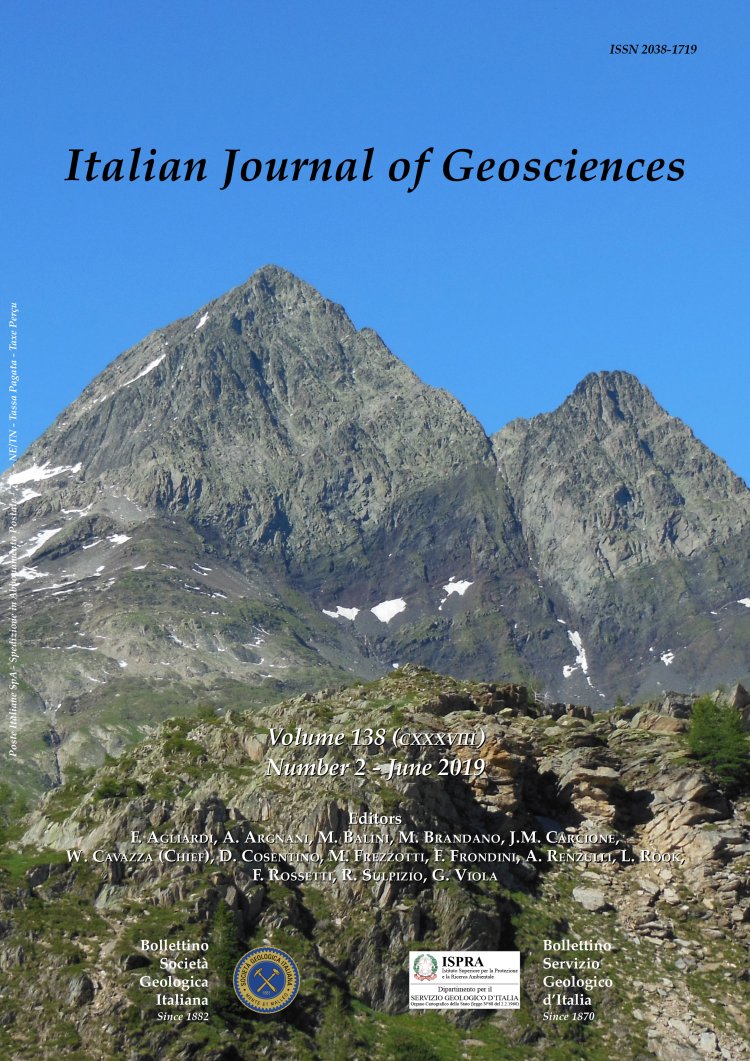
Low-angle normal faults record Early Permian extensional tectonics in the Orobic Basin (Southern Alps, N Italy)
Andrea Zanchi (1), Stefano Zanchetta (1), Luigi Berio (1,2), Fabrizio Berra (3) & Fabrizio Felletti (3)
(1) Dipartimento di Scienze dell’Ambiente e della Terra, Piazza
della Scienza 4, 20126 Milano, Italy.
(2) Dipartimento di Scienze Chimiche, della Vita e della Sostenibilità Ambientale, Parco Area delle Scienze 157/A, 43124 Parma, Italy.
(3) Dipartimento di Scienze della Terra “A. Desio”, Via Mangiagalli 34, 20133 Milano, Italy.
Corresponding author e-mail: stefano.zanchetta@unimib.it.
Volume: 138 (2019) f.2
Pages: 184-201
Abstract
Well-preserved SSE-dipping low-angle normal faults (LANF) active during the Early Permian (Cisuralian) were recognized along the northern margin of the Orobic Basin (central Southern Alps, N Italy). These faults, which escaped most of the Alpine deformations, exhumed the Variscan basement during the deposition of the upper
part of the Lower Permian succession (Pizzo del Diavolo Formation).
Fault planes show evidence of frictional processes typical of the upper crust associated with hydrothermal circulation, responsible for the deposition of cm to m thick tourmalinite and uranium mineralization.
The recognized LANFs interacted with high-angle normal faults producing half grabens that stored the Lower Permian deposits, where synsedimentary fault activity in their hangingwall is testified by abrupt vertical and lateral facies changes, thickness variations and by soft-sediment deformations. Mesoscopic structures, exposed in the hangingwall of a major LANF (the Aga-Vedello Fault system) along a synthetic high-angle normal fault, include conjugate normal faults, horst-and-graben, domino-style planar and listric faults, which clearly record synsedimentary deformations testified by liquefaction and dewatering structures, typical of pre-consolidation hydroplastic conditions. This exceptional record indicates deformations at shallow crustal level which occurred during the Early Permian along highangle normal faults soling into the LANFs, forming the northern boundary of the Orobic Basin.
The outcrop continuity, the perfectly preserved relationships among high- and low-angle normal faults together with the synsedimentary record of fault activity and the occurrence of mesoscopic faults developed during the deposition of the sediments, make this case-study an excellent reference for the analysis of
extensional tectonics in synsedimentary conditions.
In addition, the occurrence of large LANF systems, typical of a stress regime characterized by a vertical σ1, suggests that the Lower Permian Orobic Basin was dominated by pure extension at least in the study area, alternatively to existing interpretations, which favor a transtensional origin of the basin. Strike-slip tectonics can be responsible for a later partial tectonic inversion of the basin, as testified by the angular unconformity with the overlying Upper Permian succession (Verrucano Lombardo), marking a Middle Permian stratigraphic gap.
Keywords
Get Full Text